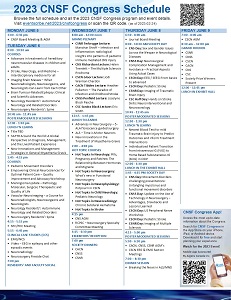Back
Grand Plenary
Session: Grand Plenary
CSCN Gloor Lecture | Dr Jodi Warman-Chardon - Muscle MRI Transforming Care in Neuromuscular Disease
Wednesday, June 7, 2023
9:30 AM – 10:00 AM MST
Location: CC: Van Horne C
Plenary Speaker(s)
Hundreds of new neuromuscular disorders have been identified in the past decade. Although genetic and antibody testing has improved, up to 30% of patients remain undiagnosed after extensive testing. Muscle MRI has emerged as an important tool in the diagnostic algorithm to detect muscle edema, and fatty replacement and specific patterns of muscle involvement. These specific disease patterns are important to help interpret genetic variants found in next-generation sequencing. Muscle MRI can also distinguish between inherited neuromuscular disorders and autoimmune mimics. This lecture will highlight novel muscle imaging patterns and new techniques as key biomarkers of disease patterns, progression and therapeutic response.

.png)

.jpg)